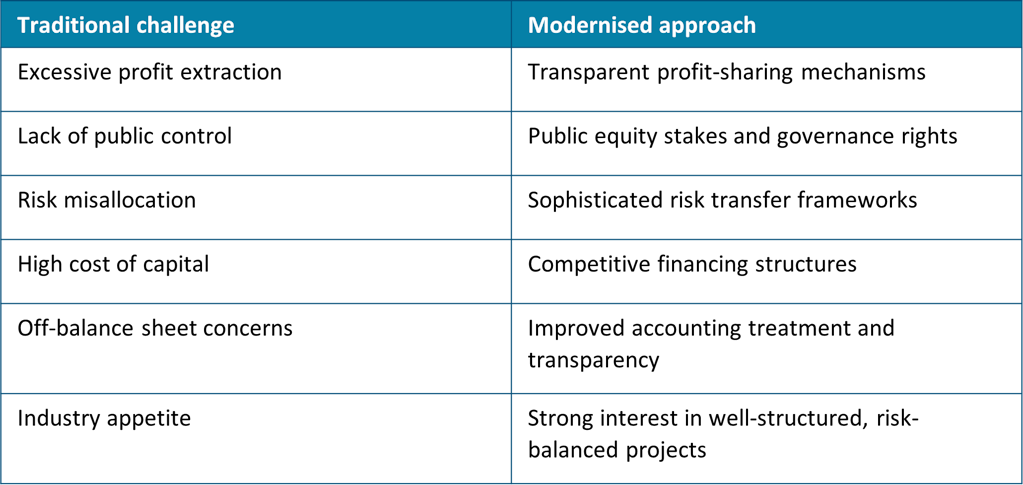A new value-led approach to NHS investment
Tags
The goals of the NHS, high-quality care, reducing waiting times, and increased productivity, all need capital investment. But the NHS’s capital budget will be flat for the rest of the decade.
This is the time for new sources of investment into the NHS to drive transformation, productivity, and value. In this way, the NHS can deliver its three big shifts to digital, community, and prevention.
Capital investment in the NHS has lagged international peers for over a decade, with the UK sitting amongst the lowest in the Organisation for Economic Co-operation and Development (OECD) indicators for capital investment. This has led to a c.£37 billion infrastructure gap, highlighted by the Darzi Report, which has left the NHS with outdated, inefficient, and ill-suited infrastructure. This translates into poor patient experience, increased workload on staff, and insufficient patient flow.
At the same time, new types of infrastructure and assets create big opportunities to transform care. Virtual hospitals, integrated neighbourhood health centres, and modern buildings are not just desirable – they are essential to meeting our expectations of modern healthcare.
Opportunities for new and innovative investment
Since 2018, there has been a moratorium on private finance in England. However, recognising the limitations of publicly funded capital programmes, the government has started to re-engage with alternative capital delivery models.
The Infrastructure Strategy has lifted the moratorium, meaning the NHS can again carefully consider testing the value of alternative sources of funding. Simultaneously, Sir James Mackey, Chief Executive for NHS England, has indicated that one of his immediate priorities is exploring alternative (off-balance-sheet) funding models.
This brings the UK back in line with international practice. Globally, joint investment vehicles are the standard approach to major projects. The challenge now is to design a model that reflects today’s economic, technological, and societal realities, rather than simply reviving the approaches of the early 2000s.
Learning from the past
Despite their controversy, the PFI and its successor, Private Finance 2 (PF2), played a significant role in delivering high-quality buildings during the early 2000s. Projects were typically delivered on time and to specification, with strong lifecycle maintenance incentives. But these models were expensive, inflexible, and opaque.
Since the moratorium in England, financing models have continued to evolve, addressing many of these issues.

Models such as the Mutual Investment Model (MIM) in Wales and the Non-Profit Distributing (NPD) Model in Scotland have demonstrated that it is possible to attract private capital while safeguarding public value. These are refined versions of a proven approach, tailored to today’s expectations of accountability, flexibility, and value.
Tailoring investment models to the needs of the NHS
Critical will be applying these models to meet the needs of the NHS, for efficient assets that support digitised, preventative, and community-centred care.
Examples from around the world show what’s possible. In Canada, the Centre Hospitalier de l’Université de Montréal integrates digital systems across clinical, operational, and administrative functions. In Australia, the Royal Adelaide Hospital uses smart technology to optimise patient flow and resource utilisation.
Smart buildings can enable real-time monitoring, predictive maintenance, and energy optimisation. Digitally integrated assets can support remote diagnostics, virtual consultations, and AI-driven clinical decision-making. Integrated assets can enable delivery from multiple neighbourhood health providers, working flexibly and dynamically.
These assets must be adaptive, interoperable, and capable of supporting new neighbourhood health models. They must also be sustainable both environmentally and financially. This calls for a more sophisticated approach to capital investment, one that blends physical and digital infrastructure into a coherent, future-ready system.
Value-led: Investment needs to deliver best value for patients
Financing models must reflect the value proposition and goals for patients. This means defining first the outcomes for new infrastructure – and then selecting the right funding models. These could include conventional NHS financing, service concessions, charitable funding, private investment, land release, and development partnerships.
This will mean a mixed economy. Some projects will be best funded through traditional government funding, some will benefit from private investment, and some will need a mix.
At the core of this will be testing value-for-money in three ways:
- Revenue affordability: Can the transformation benefits – operational savings, improved outcomes, and reduced demand – justify the long-term revenue commitments?
- Value vs. public funding: Does the proposed model deliver greater speed, certainty, and risk transfer than a publicly financed alternative?
- Cost of capital: Does this value justify the premium paid over government borrowing (Gilt financing)?
At minimum, investments should be returning four times their cost in benefits to the NHS and wider society, including significant cost savings – many will do more.
There is a big opportunity for the NHS to innovate and realise the opportunities from transformational investment, structured to maximise impact, and enhance patient care. It will mean taking refined investment models and applying them effectively to the issues facing the NHS. Through this initiative, the NHS can address its infrastructure gap and create a more resilient, innovative, and equitable health system.
Explore more








